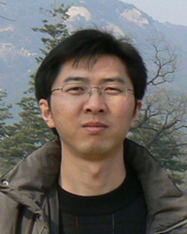|
| Wu Di Professor Office: B204, Building of College of Engineering and Applied Sciences Tel.: 025-83621215 Email: diwu@nju.edu.cn |
| Research interests: Heterostructures of magnetic and electrical functional oxides for memories, sensors and energy storage applications, including (1) ultrathin ferroelectric thin films and their size effects, (2) (multi)ferroic tunnel junctions for memories and memristors, (3) quantum manipulations on emergent phenomena at epitaxial oxide interfaces, and (4) dielectric energy storage, pyroelectric and electrocaloric energy harvesting.
Teaching: Materials characterizations
Biography: Di Wu received his bachelor’s degree and Ph.D. degree from the Department of Physics, Nanjing University, in 1996 and 2000, respectively. He then joined the Department of Materials Science and Engineering, Nanjing University, and became a full professor in 2007. He has also worked as a postdoc in the Centre d’Elaboration des Matériaux et d’Etudes Structurales, CNRS, France. He is experienced in perovskite hetero-epitaxy with atomic-scale thickness control and in the characterization of electrical, magnetic and transport properties. His research is focused on the deposition, characterization, and novel applications of perovskite thin films and heterostructures.
Achievements: (1) Received the 2005 National Natural Science Award due to contributions to the project “Ferroelectric thin films and corresponding oxide electrodes”; (2) Served as the principle investigator for two consecutive projects “Coexistence, competition and manipulation of multiple quantum orders in several electron-correlated systems” and “Quantum manipulation on epitaxial oxide interfaces and corresponding prototype devices”, sponsored by Chinese Ministry of Science and Technology in the frame of State Key Program for Basic Research of China. (3)Proposed a novel ferroelectric tunnel junction based on a metal/ferroelectric/semiconductor heterostructure, in which the electron tunneling barrier height and width can be modulated simultaneously by polarization switching in the ultrathin ferroelectric barrier, rendering a record high on/off ratio above 10000 (Nature Materials 12, 617 (2013)). Later, a novel polarization-modulated Schottkey junction devices was proposed, further promoting the on/off ratio to a million times, as in commercial flash memories (Nature Communications 8, 15217 (2017)). This overcame a major obstacle against the application of this kind of device in nondestructive readout ferroelectric memories - the small on/off ratio in previous ferroelectric tunnel junctions. | |


